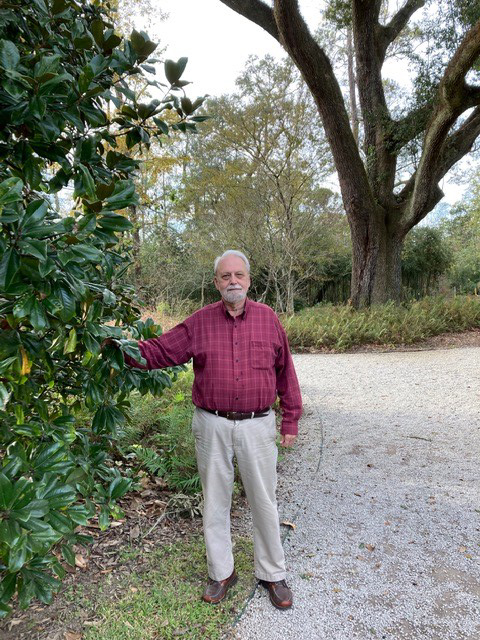History and Horticulture
“There was one place where I could get away from that tension and fear. It was when I went to the woods and gave myself up to nature. In the back wooded pasture, the oak, the elm, and the hickory tree were standing firm and open to the sky. There, in the woods, my strain and my fears would vanish, and I would find a world I could trust and in which I could feel secure. It was more than an escape. It was a sanctuary. I wanted to make my woods here a sanctuary where anyone whose load has become too heavy might walk its paths and feel the healing touch of nature. May it always be open to anyone who needs that healing touch.”
Hilltop founder Emory Smith spoke those words at the Hilltop Arboretum dedication in 1982. Born in Iowa, Mr. Smith grew up a world away from the native Louisiana plants that he would eventually come to love. He found solace and peace among the trees. Recognizing that, he wanted to share the benefits of nature with others. The Hilltop community is forever grateful that he did.
 Touring Hilltop with board member Bob Dillemuth is like going back in time to when
Mr. Smith still occupied the little house overlooking Highland Road. Dillemuth’s father
was a friend of Mr. Smith, and Dillemuth has fond memories of spending time at Hilltop
as a teen. He describes Mr. Smith as a man of “integrity, honesty and humanitarianism.”
Dillemuth says Mr. Smith was “smart, plain-spoken and no-nonsense. He was not a flashy
person, but he left his mark on the community.”
Touring Hilltop with board member Bob Dillemuth is like going back in time to when
Mr. Smith still occupied the little house overlooking Highland Road. Dillemuth’s father
was a friend of Mr. Smith, and Dillemuth has fond memories of spending time at Hilltop
as a teen. He describes Mr. Smith as a man of “integrity, honesty and humanitarianism.”
Dillemuth says Mr. Smith was “smart, plain-spoken and no-nonsense. He was not a flashy
person, but he left his mark on the community.”
Dillemuth has been a part of the Hilltop community for decades. Walking the paths with him is both a history and horticulture lesson. He relays the story of how Mr. Smith developed a friendship with Dr. Robert Reich, the founder of the LSU School of Landscape Architecture. The two met by chance at the post office where Mr. Smith worked. That serendipitous encounter between two plant enthusiasts led to LSU students treating Hilltop as a classroom and eventually the dedication of the LSU Hilltop Arboretum.
Weaved in with the memories, Dillemuth shares tidbits about the plants that call Hilltop home. He points out the Florida anise growing near the stand of Red Oak trees known as the “cathedral.” The Florida anise is a good natural screen he advises. Close by grows an Old Cow Oak which Dillemuth says has very large acorns. Around the corner, he is excited to share the Christmas ferns growing under a tree. The little plants have leaves that resemble a Christmas stocking inspiring the plant’s name. It’s just one of the many surprises discovered at Hilltop.
Many of the plants growing today at Hilltop are direct descendants of those planted long ago by Mr. Smith. In his book, Mr. Smith describes how he traipsed across the region tracking down the best native specimens he could dig up to bring back to his little farm on the hill. There is Hilltop’s Southern Magnolia which towers over the others in its vicinity. Dillemuth shares that most homeowners grow magnolias all wrong. He advises that the trees should not be pruned but allowed to grow full and to the ground. When allowed to grow naturally, the clutter magnolias are known for is no longer an issue.
The history lesson continues with a look at Mr. Smith’s house, which was designed with a picture window aligned to perfectly frame the natural world outside. Mr. Smith built the house himself from recycled materials. “He didn’t believe in wasting anything,” says Dillemuth.
After so many years with Hilltop, there is pride in Dillemuth’s voice as he shares the arboretum’s story. One could easily talk with him for hours about the place he loves and the plants that live there. That’s what happens when plant people get together. Mr. Smith recognized the bond which exists from a shared love of growing and caring for nature and created a place where nature lovers still connect with each other and the world around them.
From its origins as a small nursery to its current celebration of native plants, Hilltop is a special gathering place for plant lovers. It is a historic and horticultural wonder for which we can all be thankful this season.